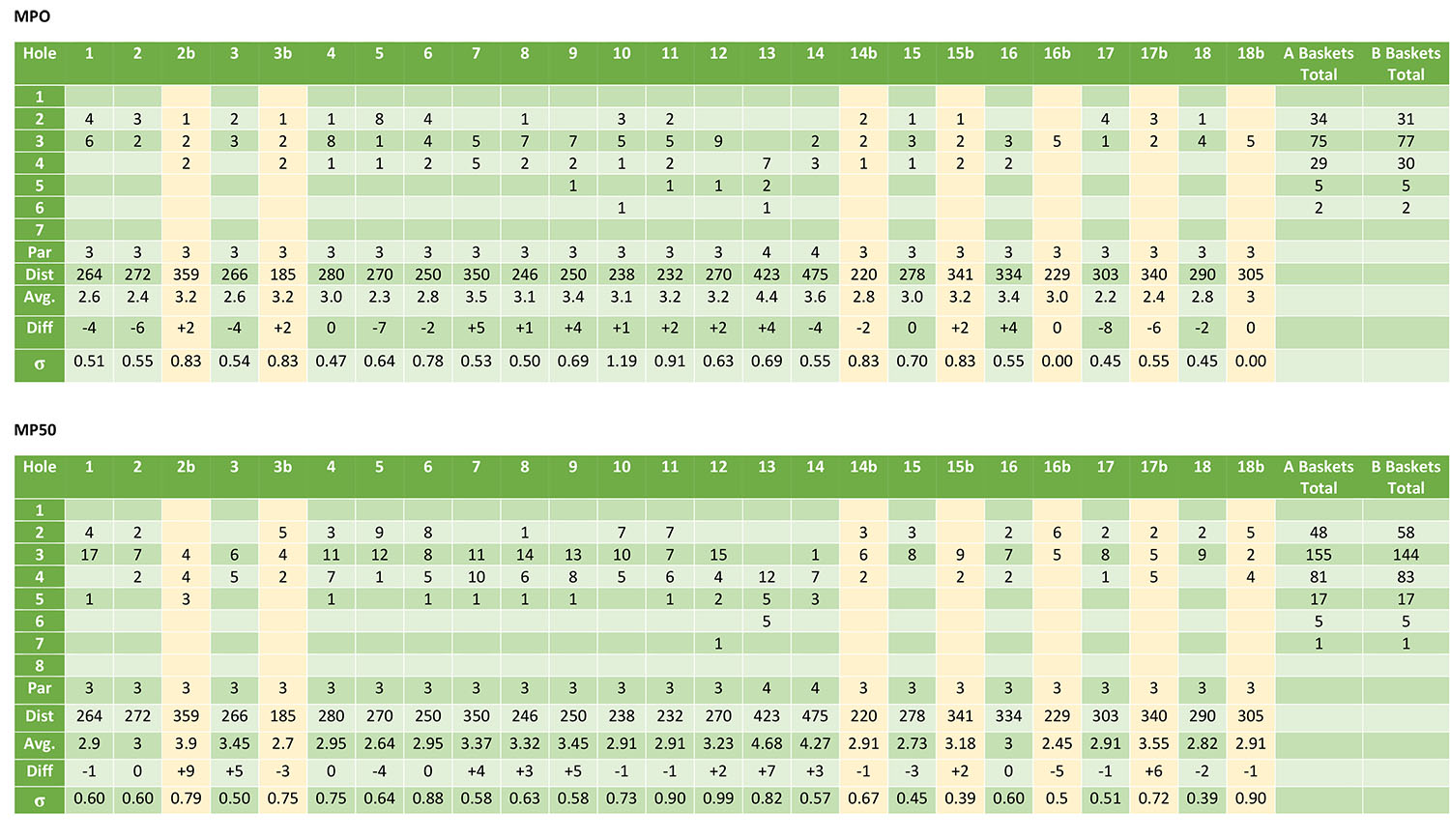- Joined
- Jul 6, 2012
- Messages
- 1,312
I recently completed a course for a local city. It is an 18-hole course that replaced a 9-hole, beginner-level course built in 2012. When I met with the recreation director back in 2016, I asked what he wanted and he very clearly indicated that he wanted the course to be suitable for tournaments. He did not simply want a larger, beginner-level course.
The available property was large enough but sits at the confluence of three creeks. The creeks meet at the middle of the park and drain off in a fourth direction, making an "X" that unevenly divide the park property into 4 triangles, with one triangle holding a playground and splash pad and community center. The park is also bounded by streets and private property on all sides. Because of the creeks, streets, fenced in park areas and private property, the design was always going to have a lot of OB. Keeping throws away from the playground and other fenced-in areas also limited space and dictated not using some of the otherwise available area.
The property is also divided between heavily wooded areas and somewhat more open areas that still have lots of trees. It's a fairly technical course with OB on 15 of 18 holes. Although many holes have OB, OB isn't much of a factor on 5 of the 15 holes with OB, due to being short and OB being somewhat distant from the fairways.
This past Saturday was the first tournament and official (although not "Grand") opening of the course. One occurrence was the late withdrawal of 4-5 MPO players after one of them played the course in advance of the tournament and then texted the others that the course was too technical and that they shouldn't waste their time playing in the tourney (the tourney filled in 24 hours, which is about average around here lately). On the other hand, there were a few comments about liking the course because even people who didn't have a lot of distance had a chance to win.
So after considering all this and looking at the stats, I started wondering just what makes a course a good course for tournaments. Is scoring spread important? Satisfaction of the participants? Looking at individual holes, is difficulty or lack of difficulty important? In some ways, I am trying to figure out if there is anything pointing to my needing to make changes and whether I should or should not be satisfied with the what I did for the city.
The following are the results in the MPO and MP50 divisions. I've calculated the spread (using Standard Deviation) of scores and given a "difficulty" rating (Avg. tenths of a throw above/below par). There were two rounds with "b" positions being played in the second round. I'm not particularly worried about the "b" pin positions, but because 14b plays much shorter, it contributed to a little less of a backup at the 14 tee box.

Any thoughts/input will be appreciated.
The available property was large enough but sits at the confluence of three creeks. The creeks meet at the middle of the park and drain off in a fourth direction, making an "X" that unevenly divide the park property into 4 triangles, with one triangle holding a playground and splash pad and community center. The park is also bounded by streets and private property on all sides. Because of the creeks, streets, fenced in park areas and private property, the design was always going to have a lot of OB. Keeping throws away from the playground and other fenced-in areas also limited space and dictated not using some of the otherwise available area.
The property is also divided between heavily wooded areas and somewhat more open areas that still have lots of trees. It's a fairly technical course with OB on 15 of 18 holes. Although many holes have OB, OB isn't much of a factor on 5 of the 15 holes with OB, due to being short and OB being somewhat distant from the fairways.
This past Saturday was the first tournament and official (although not "Grand") opening of the course. One occurrence was the late withdrawal of 4-5 MPO players after one of them played the course in advance of the tournament and then texted the others that the course was too technical and that they shouldn't waste their time playing in the tourney (the tourney filled in 24 hours, which is about average around here lately). On the other hand, there were a few comments about liking the course because even people who didn't have a lot of distance had a chance to win.
So after considering all this and looking at the stats, I started wondering just what makes a course a good course for tournaments. Is scoring spread important? Satisfaction of the participants? Looking at individual holes, is difficulty or lack of difficulty important? In some ways, I am trying to figure out if there is anything pointing to my needing to make changes and whether I should or should not be satisfied with the what I did for the city.
The following are the results in the MPO and MP50 divisions. I've calculated the spread (using Standard Deviation) of scores and given a "difficulty" rating (Avg. tenths of a throw above/below par). There were two rounds with "b" positions being played in the second round. I'm not particularly worried about the "b" pin positions, but because 14b plays much shorter, it contributed to a little less of a backup at the 14 tee box.

Any thoughts/input will be appreciated.